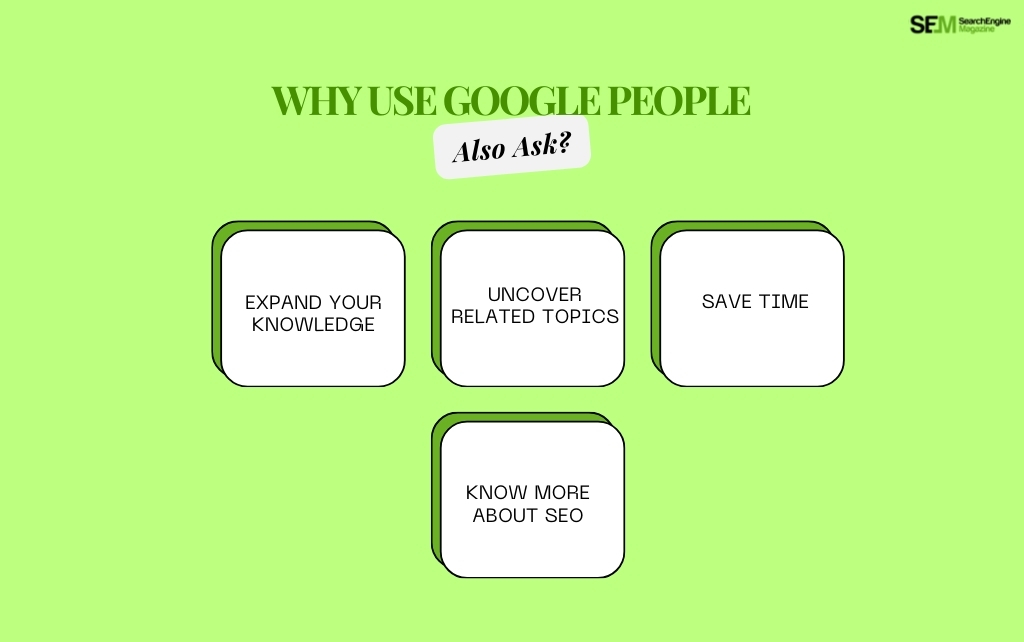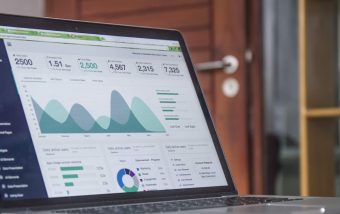How To Know If Someone Blocked You On iMessage? 5 Secret Hacks!
Apr 16, 2025

Apr 16, 2025

Apr 16, 2025

Apr 15, 2025

Apr 11, 2025

Apr 11, 2025

Apr 11, 2025

Apr 08, 2025

Mar 29, 2025
Sorry, but nothing matched your search "". Please try again with some different keywords.


As you search online, the person who experiences most of these sees a box in Google’s search results labeled “People Also Ask” (PAA). This feature displays the list of questions related to your search.
It’s not there just to look pretty; it is an important tool for a researcher doing good research. In this article, we will explore everything you need to know how to use Google People Also Ask to enhance your research skills.

Google People Also Ask is a feature that will return some additional questions to the user. This related query should be answered with a short, deep-diving response – typically culled from another page on the web.
Employing People Also Ask can enable you to find out more about a topic, find other viewpoints, and uncover details you didn’t think you had to first search for.

Knowing how to use the Google People Also Ask function really can be that difference in making research so much more effective for so many reasons:
The function allows you to investigate numerous aspects of a topic, giving you a wider range of information.
You may discover questions related to your main query that you hadn’t thought of.
You need not scan through thousands of articles as the PAA gives you an instant answer and directs you to relevant material.
If you’re a content writer, PAA will enable you to see what people are asking; hence, helping you create content to match precisely what people want to learn.

From a standpoint, acquiring access to Google People Also Ask is pretty straightforward. The following steps should get you there:
If you search for “healthy eating,” you might find questions such as:
Clicking on any of them will take you to a short answer and more questions about the topic. That way, you can dig deeper into the topic.

Now that you know what Google People Also Ask is and how to get there, here’s how you can make the most of it for research.
What do you want to research? The more specific, the better the result you’ll get from Google People Also Ask.
Your primary topic might be “plant-based diets.” Enter that phrase to begin your search:
Once you have entered your main topic into the search bar, look at the questions shown on the right-hand side of the PAA section.
That can get you off to a great start in figuring out what research to do. These questions will give you different angles on a topic and can help guide your research.
If you are searching for “plant-based diets,” you could see questions such as:
When you see a question of particular interest, click on it. Google will give you a short response that you can expand for more details. You can also find links to other articles to dig deeper.
Once you click on a question, you might have new related questions in the PAA box. This is a great way to keep digging and find out more.
If you click on “Is a plant-based diet healthy?” you might discover additional questions pop into view, such as these:
For anything you glean from Google People Also Ask, take notes. organize findings by topic or question so you can easily refer to them later.

To get the best out of Google People Also Ask, below are the best practices to observe:
The more specific your initiating question, the more likely the PAA questions are the most relevant. If you want to know some information on point about some aspect of a topic, include those details in your search.
Don’t be afraid to try out a few alternative phrases or questions about your topic. Google People Also Ask accepts variations in the search term, so you’ll likely find some new questions and information.
As you review PAA, keep an eye out for suggested questions. They could uncover tidbits of information you hadn’t thought of and open more of your understanding of the topic.
Verify its source whenever you click on a question and see the available answer. Ensure it comes from authentic websites or sites, especially if you use the data at work or for academics.
Even though Google People Also Ask is a very powerful tool, its value is in its methodological combination. Use it with academic databases, books, and other reputable sources to get a larger picture of your topic.
As you master the use of Google People Also Ask for purposes of research, it is equally important to debunk some common misconceptions.
Though PAA gives quick responses, they are often shallow and do not answer every question point. It is hence essential to dig deeper to understand something fully.
Many people think the only use of Google People Also Ask is when answering simple questions. However, this tool might also be very helpful in researching complicated subjects. The thing is, I need to research the questions deeply.
Some users feel like once they see the PAA questions for a specific search, those will always be the same. The questions change based on your search history, location, and trends, so check back regularly for new insights.
Now, let’s dive into some real-life examples of how you can apply Google People Also Ask for research purposes in rather interesting ways.
Suppose you’re going to present on climate change. You would use a general search term such as “climate change.” The PAA section could reveal questions such as:
You can select each question, research them, and write a well-rounded presentation based on the diverse insights you encounter.
Suppose you operate a food blog and wish to create a blog post about gluten-free diets. Begin with a search such as “gluten-free diet.” The PAA section could include questions like the following:
Using these questions, you can outline your blog post and give readers the information they want.
If you’re researching a paper on renewable energy, you could search “renewable energy sources.” PAA could provide some of these questions:
Each of these questions can potentially send you to different aspects of renewable energy to help create a well-rounded research paper.
This is where Google People Also Ask comes in the recognition and use of which is increasingly important for effective research in today’s digital age.
People Also Ask allows you to explore possible related questions, discover new topics quickly, and gain insights about them. Implement these steps and best practices shown in this article, and you will find more efficiency on your way to proper research.
So, the next time you have a question, do not forget to check Google People Also Ask. Perhaps this might be the key that opens the treasure chest of knowledge that will make your research more thorough and enjoyable. Happy researching!
Nabamita Sinha loves to write about lifestyle and pop-culture. In her free time, she loves to watch movies and TV series and experiment with food. Her favorite niche topics are fashion, lifestyle, travel, and gossip content. Her style of writing is creative and quirky.
View all Posts
How To Know If Someone Blocked You On iMessag...
Apr 16, 2025
7 Website Design Mistakes That Are Hurting Yo...
Apr 16, 2025
Programmable Dynamic SEO for Location-Based P...
Apr 15, 2025
Google Boba Game: How To Play This Fun Game B...
Apr 11, 2025
Which Is The Best Video Search Engine Of 2025...
Apr 11, 2025

